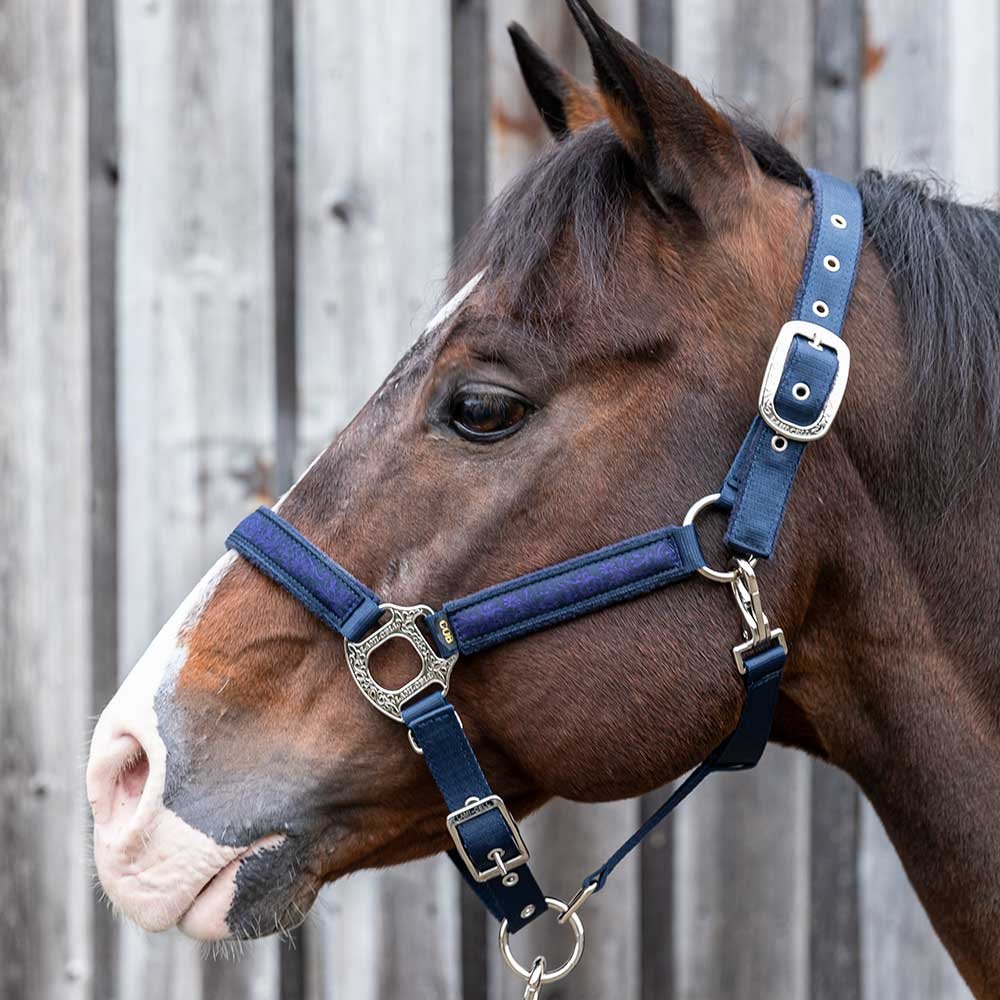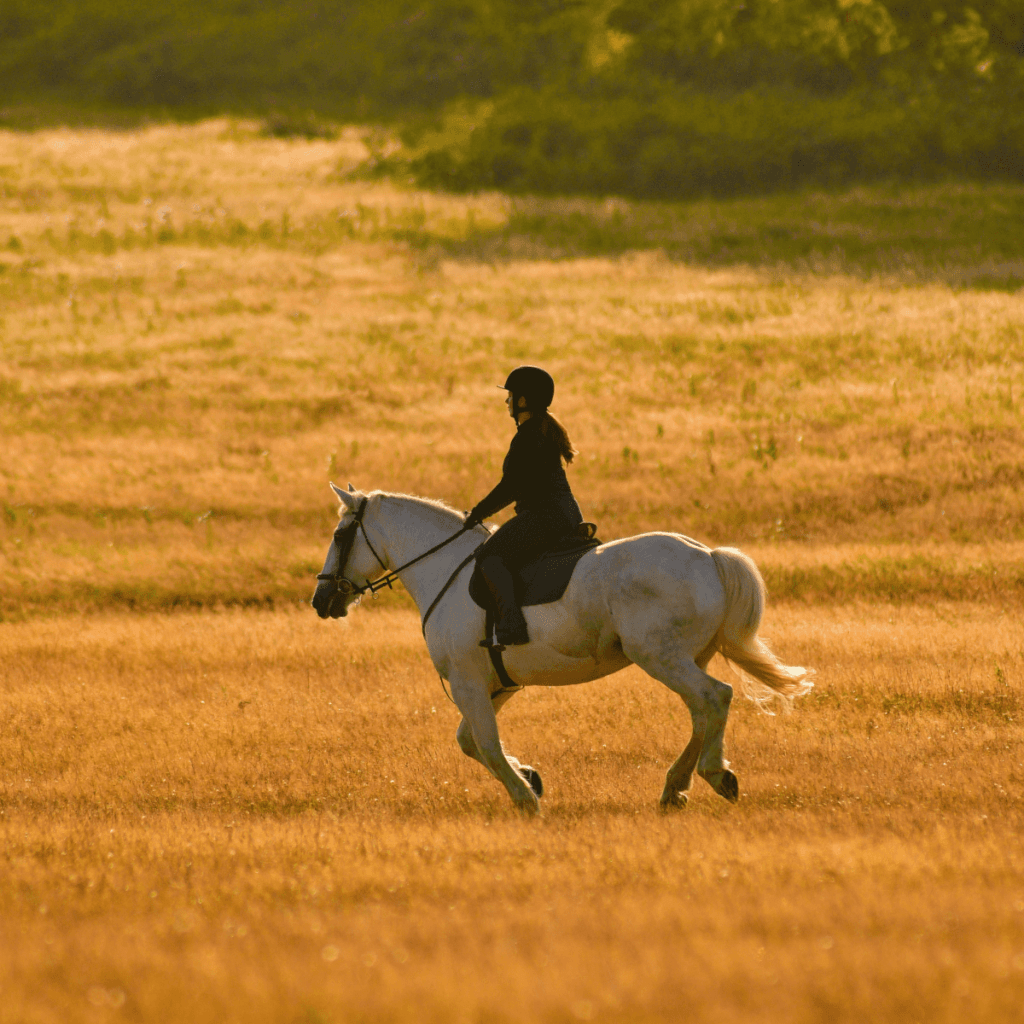Training a horse requires a combination of tools, techniques, and patience.
The tools you use can vary depending on the training goals, the type of training (groundwork, riding, or behavior modification), and the individual horse’s needs. Here are some essential tools used in horse training:
1. Halters and Lead Ropes

- Halter: A halter is one of the most basic tools used in training. It’s essential for leading, tying, and controlling a horse on the ground.
- Lead Rope: A lead rope attaches to the halter and is used to guide the horse during groundwork. It allows you to move the horse forward, backward, and sideways, and it’s an important tool for leading and controlling the horse.
2. Lunging Equipment
- Lunge Line: A long rope used to control the horse during lunging. Lunging helps the horse develop balance, flexibility, and obedience while building muscle and confidence.
- Lunge Whip: A tool used to help guide the horse in the right direction when lunging. It encourages forward movement and can be used as an extension of your arm to ask for more energy or change direction.
- Side reins: These are attached to the horse’s bridle and connect to the saddle to help encourage proper head carriage during lunging. They promote balance and posture.
- Round Pen: A small circular pen where horses can be worked without being controlled by reins. It’s great for groundwork, lunging, and establishing communication.
3. Bridles and Bits
- Bridle: A bridle is used when riding and controls the horse via the bit, reins, and headstall. It allows the rider to direct the horse’s movement and maintain control.
- Bits: A bit is an essential part of the bridle. Different types of bits (snaffle, curb, etc.) are used depending on the training level and the horse’s behavior. A bit can influence the horse’s mouth and help refine communication during riding.
4. Saddles and Saddling Tools
- Saddle: The saddle is the most common tool used for riding and provides both comfort and control. For training, you’ll want a well-fitted saddle for both the horse and rider.
- Girth: The girth helps keep the saddle securely in place on the horse’s body. Properly adjusting the girth is key to ensuring comfort and balance for the horse.
- Saddle Pads: A saddle pad is placed under the saddle to protect the horse’s back and provide cushioning, especially during long rides.
5. Training Whips and Cues
- Training Whip: A whip can be used as an extension of the rider’s arm for ground work or riding, helping to encourage forward motion or changes in direction. It should be used lightly to avoid creating tension in the horse.
- Crop or Baton: Similar to a training whip, but shorter, these are used for providing mild encouragement to the horse, especially during riding.
6. Spurs
- Spurs: Spurs are worn by the rider and are used to reinforce leg cues. They provide a gentle nudge to encourage the horse to respond to the rider’s signals more promptly. They should be used with care to avoid causing discomfort or confusion.
7. Horse Grooming Tools
- Brushes: A set of grooming brushes (curry comb, stiff brush, soft brush) helps keep the horse’s coat clean and healthy. Grooming also helps you build trust and a bond with the horse, essential for successful training.
- Hoof Pick: A hoof pick is used to clean out the horse’s hooves. This is a necessary part of horse care to ensure the hooves stay free of dirt and debris, which can lead to lameness or injury.
8. Treats and Clickers (for Positive Reinforcement)
- Horse Treats: Positive reinforcement, such as offering treats, can be an effective training tool for rewarding desirable behavior. It helps encourage the horse to repeat the desired action.
- Clicker: Clicker training is a method that uses a small clicking sound followed by a treat to reward positive behaviors. The clicker helps reinforce actions that the horse should repeat.
9. Groundwork Tools
- Long Line: A long line is used during groundwork to teach a horse to move away from pressure, respond to voice commands, and follow direction. It’s often used when teaching lunging or desensitizing the horse.
- Cones or Poles: Cones or poles can be used for exercises such as teaching the horse to step over obstacles or practice specific movements and directions.
10. Training Aids
- Training Snaffle Bit: A gentler option for introducing a horse to bit pressure. The snaffle bit is often used in early stages of training to teach the horse to respond to rein pressure.
- Ear Bonnet or Fly Mask: These tools help keep the horse comfortable during training by protecting their ears and eyes from insects, especially in outdoor settings.
11. De-spooking Tools
- Tarps or Flags: These can be used to desensitize a horse to new or scary objects. The goal is to introduce the horse to different sights and sounds in a controlled manner to help them become more confident.
- Balloons: For desensitizing the horse to unusual sights or sounds, balloons can be used as part of the training to teach the horse not to react fearfully to unexpected objects.
12. Vets and Health Monitoring Tools
- Thermometer: Regular health checks are a key component of training, and using a thermometer helps you keep track of the horse’s health and temperature.
- Stethoscope: A stethoscope can be used to check the horse’s heart rate and respiratory rate during rest and exercise.
Training a horse is a combination of proper tools, techniques, and time. It’s essential to choose the right tools for the training stage and the individual needs of the horse. Whether you’re working on groundwork, improving riding skills, or desensitizing the horse to new experiences, these tools will aid in creating a positive and effective training environment. Patience, consistency, and a deep understanding of your horse’s temperament are just as important as the tools you use in ensuring a successful training experience.
Click Here To Buy Horse Halters and Lead Ropes




